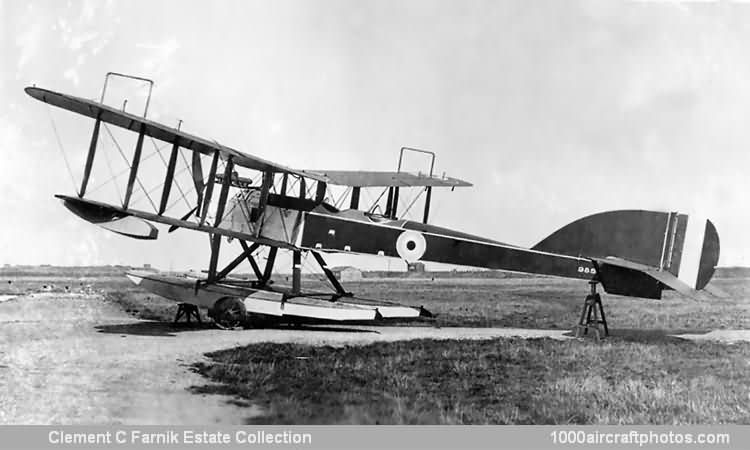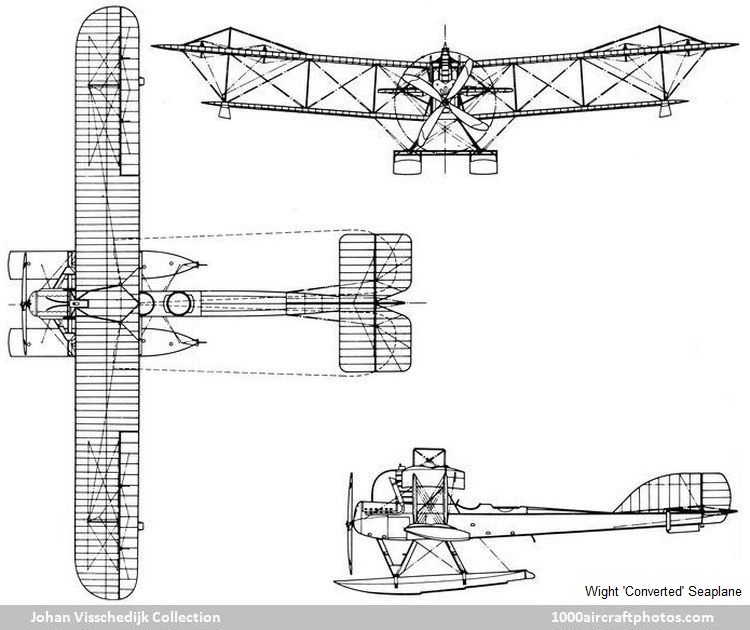The Wight 'Converted' Seaplane was descended from the sole single-engined landplane bomber (s/n N501) of 1916. It was the third type of Wight seaplane to be used in numbers by the RNAS, the others being the Pusher Seaplane of 1913 and the Admiralty Type 840 of 1915.
As its name indicated, the two-seat anti-submarine patrol Seaplane was a straightforward adaptation of the Bomber and had a wooden structure with fabric covering. Apart from the landing gear it differed only in minor details such as the installation of double-acting ailerons and modified kingposts on the top wing. Armament consisted of one Lewis machine gun on a Scarff mounting aft and provision for four 100 lb (45 kg) or 112 lb (51 kg) bombs below the wings. In the first production 'Converted' Seaplanes, the same 322 hp Rolls-Royce Eagle VI twelve-cylinder liquid-cooled V-engine was retained, but the later batches had the similar 265 hp Sunbeam Maori.
Although it was not used in such large numbers as some other types of RNAS seaplanes, the Wight 'Converted' put in a great deal of work on overseas patrols, and one of them can claim to have destroyed a U-boat, the first to be sunk in the English Channel by direct air attack from a British aircraft. The submarine in question was the UB-32 and the date was August 18, 1917. The Wight 'killed' its quarry with its first 100 lb (45 kg) bomb. It was operating from the RNAS Station at Cherbourg and was flown by Flight Sub-Lieutenant C. S. Mossop and Air Mechanic A. E. Ingledew.
A total of 80 Wight 'Converted' Seaplanes was ordered for the RNAS, s/n allocated were 9841 to 9860 (20), N1280 to N1289 (10) and N2180 to N2229, but only 45 were built, as it was decided to standardize on the Short 184. Of the last batch N2180 to N2194 were completed as trainers, N2195 to N2199 were delivered as spare parts, while N2200 to N2229 were cancelled. They were allocated to RNAS Stations at Calshot, Cherbourg (later No. 243 Squadron), Dover (later No. 233 Squadron) and Portland. Only a handful of 'Converted' Seaplanes remained at RNAS Stations by the Armistice, official records listed seven on October 31, 1918."
|
|
Eagle VI engine |
Maori engine |

